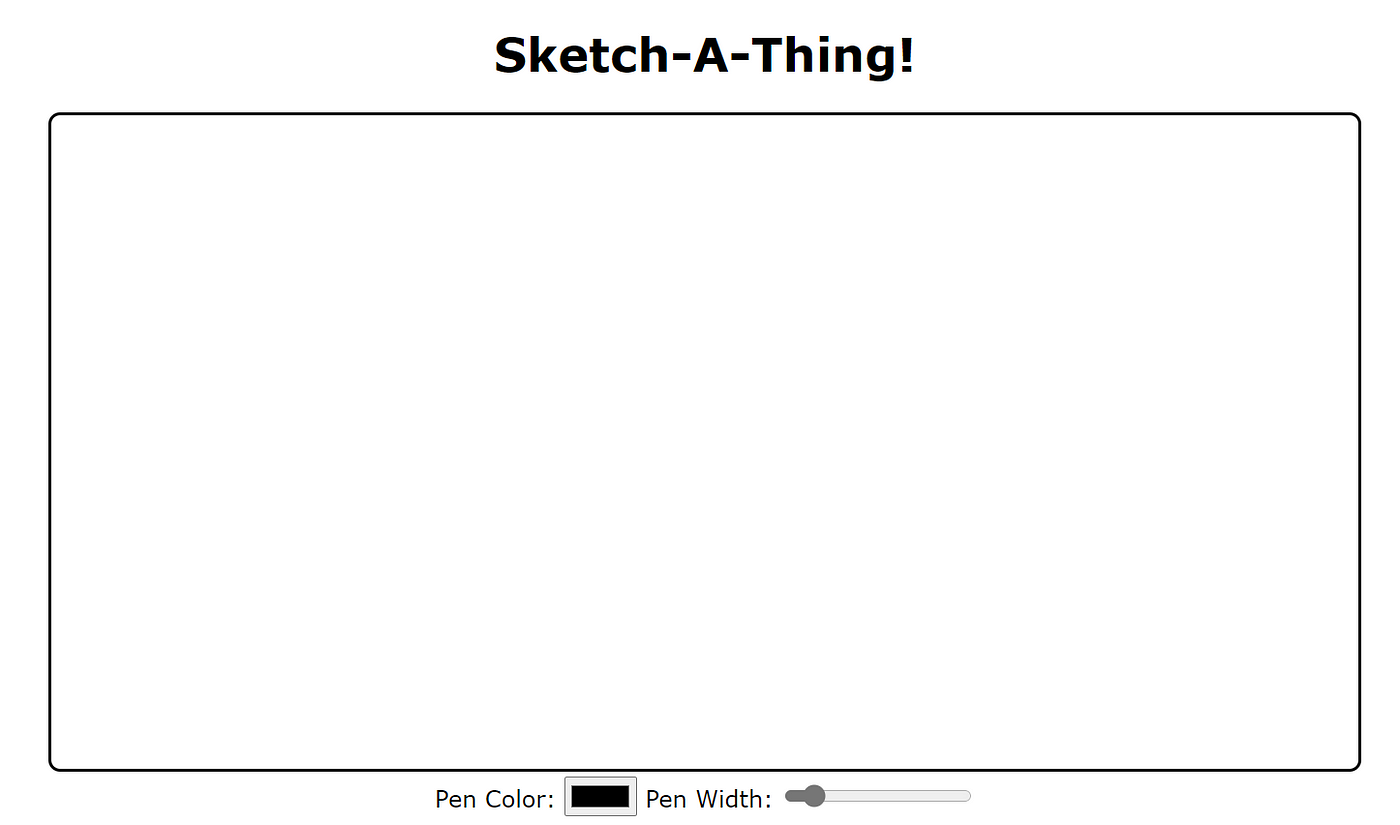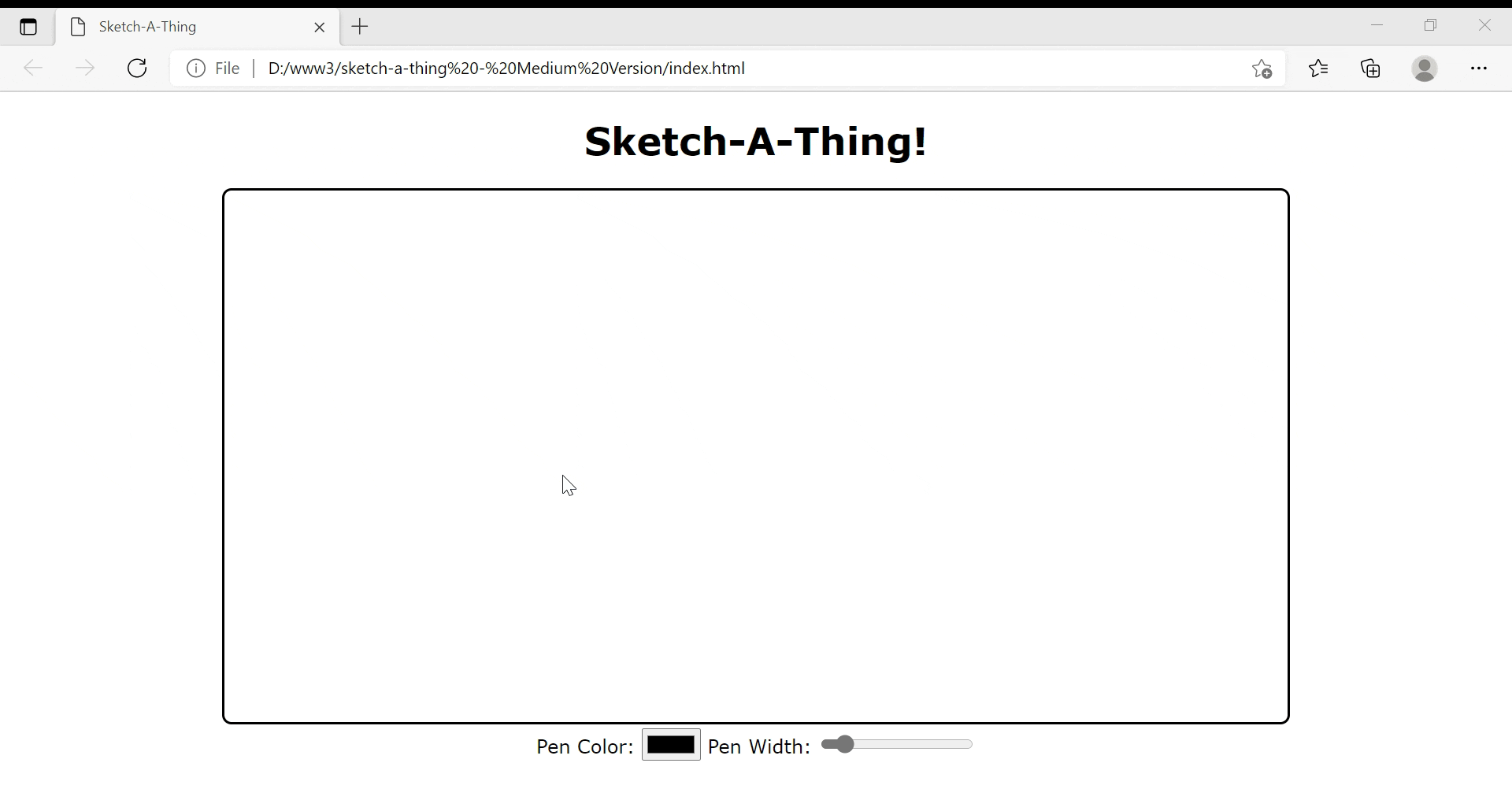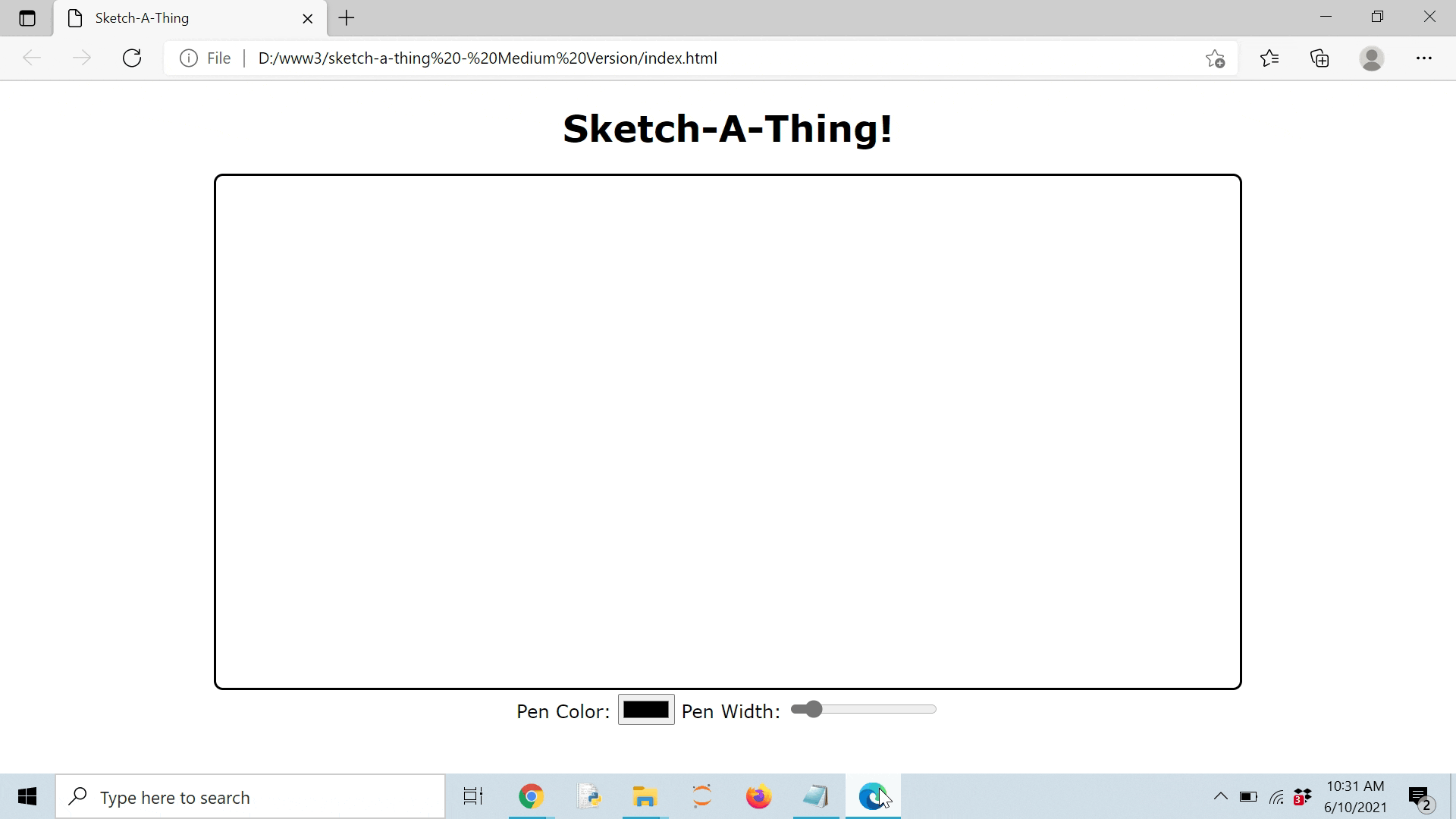how to draw with a mouse
Drawing on the HTML5 Canvas with a Mouse
How to Use the Canvas every bit an Art Tool
![]()
The canvas element in HTML5 is a groovy, versatile tool that allows the creation of both second and 3D graphics. Used for everything from hosting pictures to outright gaming, in that location's no shortage for creativity in its application.
With some vanilla JavaScript, a literal blank canvas can exist given to depict on. Actress controls for setting the pen color and width will permit for actress creative freedom
Setting up the HTML
Before diving into the JavaScript, the HTML skeleton needs to be ready upward.
<!DOCTYPE html>
<html>
<head>
<Title>Sketch-A-Thing</Championship>
<link rel="stylesheet" type="text/css" href="sketch.css" media="screen"/>
</head> Just every bit a note, a separate CSS file will be linked to give the canvas element a border. The CSS lawmaking will be provided in the next department.
<body> <!-- Create a Header -->
<div>
<middle>
<h1>Sketch-A-Thing!</h1>
</center>
</div> <!-- Create the Canvas Element -->
<div>
<center>
<canvas id = "sketchCanvas" width = "900" summit = "450"></canvas>
</center>
</div>
Later apace creating a header, the canvas is created within its ain div element. Annotation that the canvas needs a unique id. In addition, the width and elevation are manually set.
Practice non ready the width and top of the sail using relative measures, such equally the "%" or "vh/vw" units. This will give the canvass a different set of coordinates than the residual of the folio, ensuring that any mouse movements will be disproportional to the canvas.
<div>
<middle>
<label for="penColor">Pen Color:</label>
<input type="color" id="penColor" value="#000000">
<label for="lineWidth">Pen Width:</label>
<input type="range" min="one" max="ten" value="2" id="lineWidth">
</centre>
</div>
</trunk> The above creates controls for setting the pen colour and pen width. Using the input element with the type "color" will really create a robust colour selection tool that volition even allow for inputting custom RGB values. The value attribute sets the default colour, which in this case is blackness.
The input element with the "range" type will create a slider. The min and max are set to 1 to x, respectfully. Sizes even larger than 10 are possible, but anything larger doesn't draw as cleanly.
<script src="sketch.js"></script>
</html> Finally, to close things out, link to the JavaScript file.
CSS Notes
The CSS is strictly optional, but it does create a cleaner look and the utilize of a border delineates the separation of the canvas with the background
torso {
font-family: Verdana, sans-serif;
}
canvas {
border-style: solid;
edge-width: 2px;
border-radius: 8px;
margin: 0;
} Later on adding a sans-serif font, a quick, rounded border was added to the canvas. The cease result should look similar the below:

While this looks pretty good, its nonetheless lacks any real functionality.
Drawing with JavaScript
To draw on the canvas, a class will be created with 3 methods: startDrawing, drawSketch, and stopDrawing. The get-go method should trigger one time the user clicks down on the mouse and raises a flag to start making changes to the canvas. The second method should trigger when the mouse moves and creates a line on the sheet. Finally, the concluding method should trigger when the mouse is released and raises a flag to end all changes to the canvas.
Allow'southward look at implementation:
// Create a class for the canvas, including attributes for the id, // draw boolean, and coordinates
course Canvas {
constructor(canvas_id, draw, coord) {
this.canvas_id = canvas_id;
this.describe = draw;
this.coord = coord
} The class for the canvas is constructed with three attributes. The kickoff aspect is simply the canvas ID, as defined within the HTML document. The draw attribute is the flag that will dictate whether changes can made to the sail. The coord attribute represents the current coordinates of the mouse on the canvass.
// Sets draw to truthful and gets the mouse coordinates on the effect
startDrawing(issue) {
this.draw = true;
let canvas = document.getElementById(this.canvas_id);
this.coord.x = (event.clientX - canvas.getBoundingClientRect().left);
this.coord.y = (result.clientY - canvas.getBoundingClientRect().meridian);
} The get-go method, startDrawing, resets the draw flag then that it'southward true, singaling that changes may be made to the canvass. It then resets the x and y coordinates to lucifer with the current mouse position relative to the canvas element.
// The bodily office that will draw on event (mousemove)
drawSketch(event) {
// If the depict boolean isn't truthful, terminate the office
early
if (!this.draw) {
render 0;
} The next method, drawSketch, first checks the draw aspect to brand sure that it has been set up to true. If it hasn't, the function will terminate early on by simply returning 0 and not brand whatsoever additional changes to the canvass. This is important, because information technology will exist activated any fourth dimension the mouse moves, whether the mouse has clicked down or not. This pace ensures changes to the canvas will merely exist made when the user is ready.
// Select the canvas and get its context
let canvas = certificate.getElementById(this.canvas_id);
let ctx = sail.getContext('2d'); These two lines but grab the canvass and its context. These steps are always necessary for making whatsoever changes to the canvas.
// Start the line
ctx.beginPath(); // Pull from the colour and width from the associated
// controls. The line cap is hardcoded to be rounded,
// because it looks more natural for a drawing application
ctx.strokeStyle = certificate.getElementById("penColor").value;
ctx.lineWidth = document.getElementById("lineWidth").value;
ctx.lineCap = "rounded";
The side by side prepare of lines actually start the procedure of creating a line. The color of the line, called the strokeStyle, pulls directly from whatever color is selected in the HTML. Likewise, the lineWidth pulls from the slider.
An additional parameter, lineCap, is hardcoded for a rounded. This volition give the terminate of the line a nice rounded look that looks more natural than one with hard edges.
// Start moving to the coordinates adamant by mouse
// movement. The position is updated as the cursor moves
ctx.moveTo(this.coord.x, this.coord.y);
this.coord.ten = (outcome.clientX - canvass.getBoundingClientRect().left);
this.coord.y = (event.clientY - canvass.getBoundingClientRect().superlative); // Specify where the line ends
ctx.lineTo(this.coord.x , this.coord.y);
// Draw the line
ctx.stroke();
}
Once over again, the coordinates of the mouse relative to the canvas are grabbed and used in determining where the end of the line goes. Once washed, the line is drawn. With the line drawn, the method ends.
// Sets draw to imitation on event (mouseup)
stopDrawing(upshot) {
this.draw = false;
}
} The last method but sets the draw attribute back to imitation.
// Write the primary function that will execute on load
function main() {
// Initialize the main object, canvass
let sheet = new Canvas("sketchCanvas", imitation, {10:0 , y:0}); As a personal preference, I like to put whatever functions that change a web application on startup in a principal part and call it separately. In doing so, a new object is created called canvass, which uses the sail ID and sets the draw attribute to false and the coordinates to (0, 0) past default.
// Add together effect listeners for the mousedown, mouseup, and
// mousemove.
document.addEventListener('mousedown', function(e){
canvass.startDrawing(due east);
});
document.addEventListener('mouseup', function(eastward){
canvas.stopDrawing(e);
});
document.addEventListener('mousemove', role(e){
canvass.drawSketch(e);
}); }
A series of three event handlers are added to access the methodsof the newly created object:
- mousedown: When the mouse is clicked down, it activates the startDrawing method, which allows for changes to exist made to the canvas.
- mouseup: When the mouse is released, the stopDrawing method is called, which will end all action to the canvas.
- mousemove: Whenever the mouse is moved, the drawSketch method is called, which draws lines on the sheet.
// Look until the page is loaded before applying the main part
window.addEventListener("DOMContentLoaded", ()=>{
main();
}); Even though the HTML document is pretty blank, equally a best practise, the main part volition only be chosen once the DOM is completely loaded.
Concluding Result
If all goes well, the terminal result will await like the below:

Further verification of the pen color and pen width can likewise exist demonstrated:

Conclusions
Creating a tool to depict allows beginners to web development to encounter the immediate utility and ability of the sail chemical element with a fun, creative project. Its application extends beyond just virtual whiteboards and may be used for things like signatures or simple photo editing.
Source: https://levelup.gitconnected.com/drawing-on-the-html5-canvas-with-a-mouse-d92c7d57fb7c
Posted by: hamiltonprionat.blogspot.com


0 Response to "how to draw with a mouse"
Post a Comment